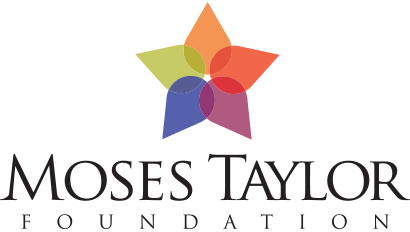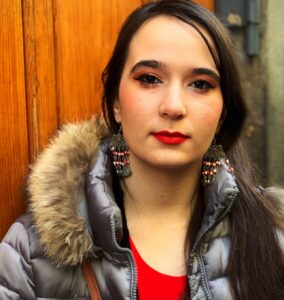Thank You
Thank you to the following organizations for their continued support of our research and this Data Dashboard, which is part of Project STIR (Sparking Transformation using Information & Research).
Revenue & Expenditures
Lackawanna County Fiscal Snapshot
In 2020, the county’s total revenues exceeded $235 million – a 39-percent jump that reversed a declining trend from 2017 to 2019. Expenditures rose by 56 percent from the prior year. These trends are due to the COVID-19 pandemic, which increased the need for certain government services and brought about new revenue through the CARES Act. In 2020, debt per capita fell below $1,000 for the first time among all years analyzed.
County revenue consists primarily of taxes and intergovernmental funds. Intergovernmental funds come from federal, state, and local sources. They include grants, reimbursements for services, and the like. The majority of intergovernmental funds received by the counties support health and human services. Tax revenue, on the other hand, includes all taxes levied by a county government (predominantly property taxes). In Lackawanna County, intergovernmental revenue has generally trended up, and increased greatly in 2020, though tax revenues also increased.
Lackawanna County Revenue & Expenditures
Source: Lackawanna County
Luzerne County Fiscal Snapshot
In 2020, Luzerne County’s total revenues grew by 13 percent to more than $274 million, while expenditures grew by a similar rate, amid local governments’ response to the pandemic. County debt fell by more than $15 million from 2019 to 2020.
Luzerne County’s intergovernmental revenue (which includes transfers from other federal, state, and local sources such as grants and reimbursements for services) had been increasing slowly since 2016, but fell by 0.5 percent in 2019. In 2020, this portion of revenue grew by nearly 30 percent due to an influx of COVID-related funds. Tax revenue for the county increased slightly, building on increases seen in the prior years.
Luzerne County Revenue & Expenditures
Source: Luzerne County
Wayne County Fiscal Snapshot
Wayne County’s revenue has grown each year since 2015, and 2020 brough the highest rate of growth – over 17 percent compared to 2019. Expenditures grew by about seven percent, but surpassed total revenue. The growth of both of these statistics in 2020 is largely due to the COVID-19 pandemic, which increased the need for certain government services and brought the county new revenue through intergovernmental funds. Intergovernmental funds include transfers from other federal, state, and local sources such as grants and reimbursements for services. These funds grew by 15 percent from 2019 to 2020, but added tax revenue was a larger driver in the increase in total revenue; it increased 25 percent from the previous year.
Wayne County Revenue & Expenditures
Source: Wayne County
Property Tax Rates
In Lackawanna and Luzerne Counties, property tax rates have remained unchanged for several years. The most recent adjustment, effective in January 2020, was an 11-percent increase in the total real estate millage rate in Lackawanna County. Wayne County has seen several adjustments in recent years, including an increase in millage rates effective in 2022, bringing the total to 5.23 mills in real estate taxes. In 2023, Wayne County’s millage was adjusted downward to coincide with the conclusion of a property tax reassessment.
The three counties’ property tax rates vary significantly due to how and when properties in the counties were assessed. The ratios of assessed value for tax purposes to actual market value are different in each area, and in Wayne County the reassessment resulted in a higher ratio of assessed to actual value, so the decline in millage rates does not mean that property tax bills decreased. Furthermore, tax rates included in this report do not include school taxes, which typically comprise the largest portions of all property owners’ tax bills.
2023 Tax Rates
Source: PA Department of Community & Economic Development
| Lackawanna Tax Rates (mills) | Luzerne Tax Rates (mills) | Wayne Tax Rates (mills) | |
|---|---|---|---|
| Real Estate - General Purpose | 47.6000 | 1.2358 | 2.9800 |
| Debt Service | 12.5000 | 1.1836 | 0.2600 |
| Library | 2.8200 | 0.0459 | |
| Culture and Education Fund | 1.0000 | ||
| Community Colleges | 0.3240 | ||
| Roads & Bridges | 0.1070 | ||
| Criminal Justice | 1.9977 | ||
| Human Services | 0.4260 | ||
| Hotel Room Rental (Percent) | 7% | 5% | 3% |
| Real Estate Total | 63.9200 | 5.3200 | 3.2400 |
Sales Tax
Sales tax remittance generally trended upward from 2013 through 2019, reaching over $11 billion statewide in the 2018-2019 reporting year, though Luzerne County has seen more significant fluctuations.
In 2019-2020, sales tax remittance dropped in all three counties and statewide due to disruptions in commerce caused by the COVID-19 pandemic. Luzerne County saw the lowest total among all years analyzed. The year-over-year declines in Lackawanna, Luzerne, and Wayne Counties (6.8 percent, 5.8 percent, and 7.3 percent, respectively) were larger than the statewide decline of 2.5 percent. However, all areas have since experienced significant growth in sales tax remittance as economic activity resumed after shutdowns were lifted and since prices increased due to high inflation. From the 2019-2020 tax year to the most recent data available, Lackawanna and Luzerne Counties and Pennsylvania saw increases of about 37 percent; in Wayne County, the increase was even larger at 58 percent.
Sales Tax Remittance
Source: PA Department of Revenue.
Government Employment
Government employment presented in the table includes staff of federal, state, and local government entities. In the three counties, government sector activity supported nearly 29,000 jobs in 2021. In each county, however, there was a noticeable decline in government jobs in 2020 – coinciding with the COVID-19 pandemic and accelerating a previous trend seen in Lackawanna County, where government employment fell by about four percent between 2015 and 2019. The total rebounded in Lackawanna County by 2021 but government employment levels have yet to do so in Luzerne and Wayne Counties and statewide.
In the three-county region, about 63 percent of government employment is by local entities, including cities, boroughs, townships, counties, and school districts. On average, state workers have made up 21 percent of government employment in the region, with the remaining 16 percent consisting of federal employees. State and local employment both dropped during the pandemic, while federal employment actually increased in the region. Although the number of federal workers in the region declined in 2021, this number remains slightly above pre-pandemic levels.
Government Employment
Source: Chmura Economics via JobsEQ








 Sarah, a former Institute intern, joined The Institute in April 2021 as a Research Assistant. She started her new role as a Research Analyst in January 2024.
Sarah, a former Institute intern, joined The Institute in April 2021 as a Research Assistant. She started her new role as a Research Analyst in January 2024. 

 Jill Avery-Stoss joined The Institute in June 2018 to fill the newly-created role of Research, Data, Intern & Administrative Coordinator. She assists with the collection and management of data for purposes of ethical and efficient analysis. She visits partner campuses to market The Institute’s internship opportunities, and participates in event-planning logistical activities as well. In 2021, Jill was promoted to Director of Operations to reflect the diversity in her job description and the additional marketing and communication functions she successfully mastered in 2020. In 2022, Jill was named Chief Operating Officer after expanding into both research and administrative management functions. Jill is taking on project management, fundraising, and other executive leadership functions of the organization.
Jill Avery-Stoss joined The Institute in June 2018 to fill the newly-created role of Research, Data, Intern & Administrative Coordinator. She assists with the collection and management of data for purposes of ethical and efficient analysis. She visits partner campuses to market The Institute’s internship opportunities, and participates in event-planning logistical activities as well. In 2021, Jill was promoted to Director of Operations to reflect the diversity in her job description and the additional marketing and communication functions she successfully mastered in 2020. In 2022, Jill was named Chief Operating Officer after expanding into both research and administrative management functions. Jill is taking on project management, fundraising, and other executive leadership functions of the organization. Ooms is responsible for all facets of research, organizational strategy, and management. Ooms is an active principal investigator in all Institute research. Ooms has been nationally recognized as a leader in regional economic development. She turned that skill into a research institute to help other regions develop and prosper. Her strategic skills have allowed The Institute to expand its services to the private and non-profit sectors for research and analysis in community health needs assessments, strategic planning, market and feasibility studies, and economic impact analysis.
Ooms is responsible for all facets of research, organizational strategy, and management. Ooms is an active principal investigator in all Institute research. Ooms has been nationally recognized as a leader in regional economic development. She turned that skill into a research institute to help other regions develop and prosper. Her strategic skills have allowed The Institute to expand its services to the private and non-profit sectors for research and analysis in community health needs assessments, strategic planning, market and feasibility studies, and economic impact analysis.